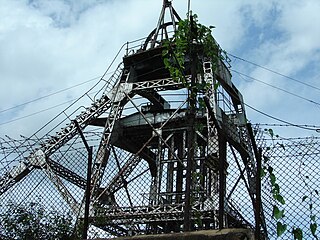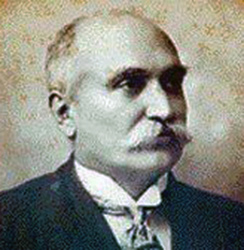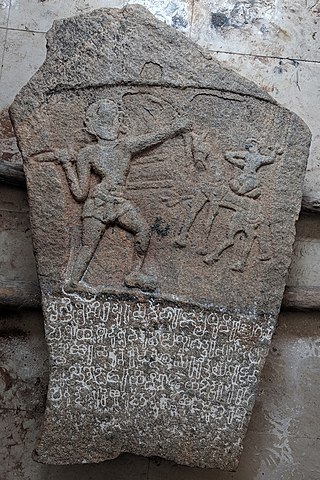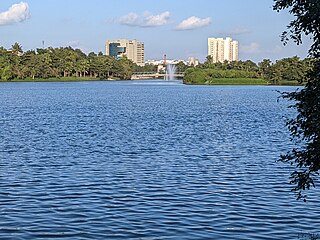
Kolar district is a district in the state of Karnataka, India.

Kolar Gold Fields (K.G.F.) is a mining region in K.G.F. taluk (township), Kolar district, Karnataka, India. It is headquartered in Robertsonpet, where employees of Bharat Gold Mines Limited (BGML) and BEML Limited and their families live. K.G.F. is about 30 kilometres (19 mi) from Kolar, 100 kilometres (62 mi) from Bengaluru, capital of Karnataka. Over a century, the town has been known for gold mining. The mine closed on 28 February 2001 due to a fall in gold prices, despite gold still being present there. One of India's first power-generation units was built in 1889 to support mining operations. The mine complex hosted some particle physics experiments between the 1960s and 1992.

Bangalore is the capital city of the state of Karnataka. Bangalore, as a city, was founded by Kempe Gowda I, who built a mud fort at the site in 1537. But the earliest evidence for the existence of a place called Bangalore dates back to c. 890.

Basavanagudi is a residential and commercial locality in the Indian city of Bangalore. Basavanagudi is one of the oldest localities of Bangalore evidenced by the fact that it is home to four inscriptions, three Kannada inscriptions and one Tamil inscription and also one of the poshest areas of Bangalore. It is located in South Bangalore, along the borders of Jayanagar and Lalbagh Botanical Gardens. The name "Basavanagudi" refers to the Bull Temple, which contains a monolith statue of the Nandi Bull. The word Basava in Kannada means bull, and gudi means temple. The main commercial street in Basavanagudi is DVG Road, which is home to numerous retail businesses - several of them dating back to the 1920s and 1930s. Towards the middle of DVG Road is Gandhi Bazaar, known for its market which sells fresh flowers, fruits, and vegetables. The neighbourhood includes several historic restaurants, notably Vidyarthi Bhavan, a vegetarian restaurant which opened in 1943.

Malleshwaram is a northwest neighborhood and one of the zones of Bruhat Bengaluru Mahanagara Palike in Bengaluru, India. It was planned in 1889 after the great plague of 1898, developed as a suburb in 1892 and handed over to the city municipality in 1895. As per the 1878 Survey of India map, the area came under the village of Ranganatha Palya and was later named after the Kadu Malleshwara Temple. The neighbourhood houses many offices, one them being World Trade Center Bengaluru. It has two shopping malls, Mantri Square and Orion Mall. Education boards of the state KSEEB and PU boards are located here.

Vyankojirajah Bhonsle or Ekojirajah I Bhonsle was the younger half-brother of Chhatrapati Shivaji Maharaj and founder of Maratha rule in Thanjavur in modern day Tamil Nadu. He was the progenitor of the junior branch of the Bhonsle family which ruled Thanjavur until the formal annexation of the kingdom by the British East India Company in 1855.

Benjamin Lewis Rice, popularly known as B. L. Rice, was a British historian, archaeologist and educationist. He is known for his pioneering work in deciphering inscriptions, especially in Kannada, and in Sanskrit inscriptions in the Kingdom of Mysore and is eulogized as shasanapitamaha or Purathathva Pitamaha Rice's researches were published as the voluminous Epigraphia Carnatica which contains translations of about 9000 inscriptions he found in the Old Mysore area. Rice also compiled the much acclaimed Mysore Gazetteer which still remains the primary source of information for most places in Mysore and neighbouring Coorg. Rice served with distinction in the Mysore civil service and as first Director of the Mysore State Archaeology Department.
Gowda is a surname native to Karnataka state of India. It is mainly found among the Vokkaligas in South Karnataka, Kurubas and the Lingayats in north Karnataka. It is also used by other communities like Namadhari Naiks, Billavas. Gowda was originally an honorific used by the administrative head of a village. Typically, such a head owned land and held political and social sway in the village. Among Kurubas, it was used to refer to the head of the community.
Kalya (Kalavathi pattana) or Kalya is a historic settlement located in Magadi Taluk, Ramanagara district of Karnataka, India. Kalya as an early settlement can be attested by the fact that the prehistoric rock art and tools reported from Kalya,and also inscriptional documentation in the village from 550 CE to the early 17th century CE, making it one of the few places in the country that has been continuously inhabited for 3000 to 3500 years.
Chokkanathaswamy temple, at Domlur in the Indian city of Bangalore, Karnataka, India, is dedicated to the deity known as Chokkanathaswamy or Chokka Perumal. It is one of the oldest temples in the city. The temple has numerous Kannada and Tamil inscriptions that have been documented in the Epigraphia Carnatica Vol 9, Bangalore District (1905ed). Based on these inscriptions the temple is at least as old as 1200CE.
There are nearly a thousand inscriptions in Tamil in the Southern Karnataka districts of Bangalore, Mysore, Kolar and Mandya in India. Nearly one third of these inscriptions are found in the Kolar District. Of all the inscriptions collected and published in the Epigraphia Carnatica Vol X for Kolar district, a fourth are in Tamil. The Tamil inscriptions start to appear around 1000 AD, after the conquest of the region by the Chola dynasty king Rajaraja I. Even after the Cholas left the area, the Hoysala and later the Vijaynagar kingdoms continued to use Tamil in the inscriptions.

Mysore Hatti Krishna Iyengar was an Indian historian, archaeologist, epigraphist and authority in Indian numismatics. He pioneered the new field of Indology involving the study of Indian culture, history, music and traditions from a historical perspective. He is credited with the discovery of one of the oldest Kannada inscriptions, the Halmidi inscription, dating back to 350 A. D. He also discovered the remains of the city of Isila near Brahmagiri during his excavations at Chandravalli, Chitradurga. The forgotten tomb of Shahaji was traced by M. H. Krishna during his years at the Mysore Archaeological Department. His years at the Archaeology Department saw him churn out many of excavation reports and these were later published in successive volumes of Epigraphia Carnatica. During Krishna's tenure at Bangalore, he was instrumental in cataloguing close to 6000 coins in the archives of the archaeology department there. He was trained at the University College, London under Ernest Arthur Gardner. and would later accompany Sir Flinders Petrie in his excavations in Egypt.

The Hebbal-Kittayya 750CE Inscription is one of the oldest known inscriptions in Kannada script and is Bangalore's oldest inscription. The inscription was re-discovered on 1 May 2018 in Hebbal. The inscription is on a Ooralivu Veeragallu in honour of Hebbal native Kittayya. Ooralivu veeragallu’s are memorial stones erected in honour of a person martyred defending an attack on his or her town.
Jakkur is a suburb in the northern part of Bangalore, Karnataka, India. Located on the eastern side of the National Highway 44 between Yelahanka and Hebbal. Primarily a residential locality the area is also known for the Jakkur Aerodrome ,Jakkur lake, and Jawaharlal Nehru Centre for Advanced Scientific Research. Jakkur Aerodrome spread over 200 acres, opened in 1948 is now a pilot training school.
Ivara Kandapura is a small hamlet adjoining Hesaraghatta on the northern outskirts of Bangalore, in Karnataka, India. Ivara Kandapura is famous for a 10th-century temple complex that is home to five temples, named after the pandavas as The Dharmeshwara, Nakuleshwara, Bheemeshwara, Sahadeshwara, Arjuneshwara and Kunti Gudi. Nearby these temples is a lesser known temple called Venugopala temple, historically referred to as Siddeshwara Temple. Related to this temple and the temple builder are three inscriptions.

Domlur is a locality in the eastern part of Bengaluru city in India. Domlur is a historic places as indicated in the 18 inscriptions spanning the period 1200-1440CE found there. Of these, 16 inscriptions are at the Chokkanathaswamy Temple dedicated to the deity Chokkanathaswamy or the Chokka Perumal [the Hindu God Vishnu]. Of these eleven inscriptions are from the period 1200-1440 CE and have been documented earlier in Epigraphia Carnatica, Vol 9, these are mostly donatory inscriptions for the deity Chokkanathaswamy and for the Someshwara temple (non-existent).

Singapura is a locality in the northwestern part of Bengaluru, Karnataka, India. The Varadarajaswamy Temple in Singapura is at least 500 years old, as recorded in Harohalli and Chikkabettahalli inscriptions. The temple is referred to as the Tiruvengalanatha temple in inscriptions. The inscriptions also mention a grant given to Ramanuja Koota, a religious institution of Sri Vaishnavites, named after the reformer-saint Ramanuja.

Four inscriptions and hero stones have been found in the suburb of Jakkur, indicating that it is a historic locality of Bengaluru.
Chikkabanavara is a residential locality in north Bengaluru, Karnataka, India. Chikkabanavara is also an ancient locality as evidenced by six inscriptions that have been discovered there. Additionally an ancient Kalyani and a few old temples allude to the historicity of the locality. Chikkabanavara is also home to one of the Bengaluru's ancient lakes, its documented history traced to at least a thousand years based on inscriptional references. Additionally, other ancient artefacts such as, Nagastones, fragmented pillars, memorial stones are also found at Chikkabanavara.

Allalasandra is a historic locality in North Bengaluru adjoining the Gandhi Krishi Vigyan Kendra (GKVK) campus on Bellary road. Allalasandra is a part BBMP Ward Number 4, Byatarayanapura assembly (AC150) and Chikkaballapur parliamentary (PC27) constituencies with about 20,000 voters.
















